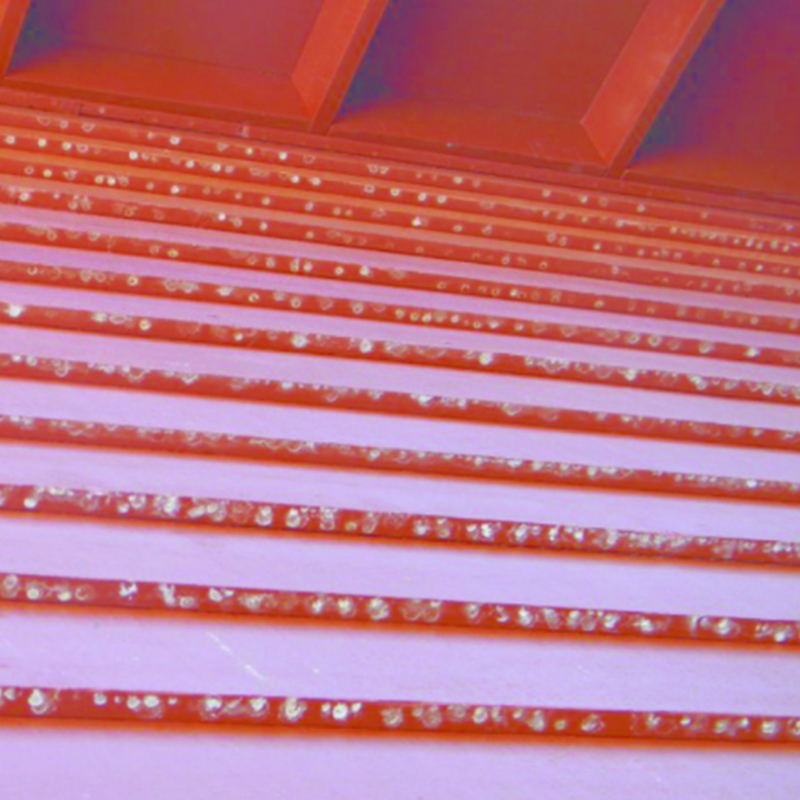Surfactant leaching

Find out everything you need to know about Surfactant leaching in the Dulux Technical Advice PDF.
What is surfactant leaching?
“Surfactant leaching” is best described as soapy, sticky or oily spots or perhaps glossy streaks that appear on newly painted surfaces, usually within the first few weeks after application.
The leached material can vary in colour or appearance from almost clear (being detected as glossy patches on the paint surface) to whitish (translucent), to shades of tan, brown or orange.
Surfactant Leaching can occur on either interior painted surfaces such as a shower, bathroom, laundry and kitchen or on exterior painted surfaces such as under eaves, balcony soffits, exterior broadwall and sheltered areas such as courtyards.
Why?
Surfactants are ingredients within water based paints that are critical to the performance properties of the product. Paint characteristics such as colour, can stability, flow and levelling are either influenced or controlled by surfactants.
Surfactant leaching occurs when poor drying conditions cause the paint to dry too slowly, allowing the surfactants to rise to the surface of the paint film in concentrated amounts and thereby leaving oily or sticky deposits or residues on the painted surface.
All water based latex paints will exhibit this tendency to some extent and the effect is more noticeable on dark colours such as browns or dark greens. Heavily tinted colours are more susceptible than pastel shades.
How does it occur?
Areas of high humidity such as a bathroom or laundry can exhibit surfactant leaching given the right set of conditions. Surfactants usually evaporate readily from the paint film when the drying conditions are good or they are locked into the paint film.
Poor drying conditions include cold substrates, cool air temperatures, high humidity and a lack of air circulation / ventilation or any combination of these. Surfactant leaching is often encountered when a newly painted room is not given sufficient time to dry thoroughly before it is subjected to adverse conditions that can trigger the effect.
For example, if a freshly painted shower recess or bathroom is used too quickly, the steam and humidity can leach out the surfactants from the uncured paint film.
Another example would be a freshly painted laundry with a clothes drier generating high levels of humidity within a small closed room could easily trigger surfactant leaching. On newly painted exterior surfaces surfactant leaching can appear after light rain or overnight dew (condensation) especially under eaves or balcony soffits
Solution
Generally, the leached surfactant does not lessen the durability of the paint film, it just looks unsightly.
On exterior surfaces, surfactant leaching will usually weather off over a short period (approximately a month) without the need for intervention.
Rinsing with fresh water can help to wash it away. On interior surfaces, the leached material can be easily removed within a week (allow the paint film to fully cure and harden) by washing with a mild soapy solution and a soft cloth or sponge, followed by a thorough rinse with clean water. Care must be exercised when washing to prevent damage to the soft or uncured paint film. Under severe conditions surfactant leaching may reappear once or twice until all the surfactant has been removed.
The effect will be less noticeable each time and can be removed by washing in the same manner as prescribed above.
On rare occasions, the leached material may stain the paint surface. This would require a repaint once the surface has been thoroughly washed and the paint film has cured.
Prevention
To prevent surfactant leaching, avoid painting exterior surfaces in the later hours of the day if cool, humid or damp conditions are expected in the evening or overnight.
Allow the fresh paint work in bathrooms, kitchens and laundries to fully cure and harden before washing or subjecting the paintwork to steam, condensation or high humidity. Avoid using the shower for several days until the painted surface is fully dry.
As a general rule, an interior paint film will take approximately 7 days to fully cure, harden and become washable. It may take longer in adverse environmental conditions (high humidity, cold temperatures).
References
Further information relating to “surfactant leaching” can be found in Australian Standard AS/NZS 2311 “The Painting of Buildings” Sections 6.3.5
Get detailed information about the physical and chemical properties of our products.
Advice for those challenges that arise in your busy and varied days
Access product datasheets, specifications, substrates, substrate preparations, safety datasheets (SDS) and create a project specification from the ground up.